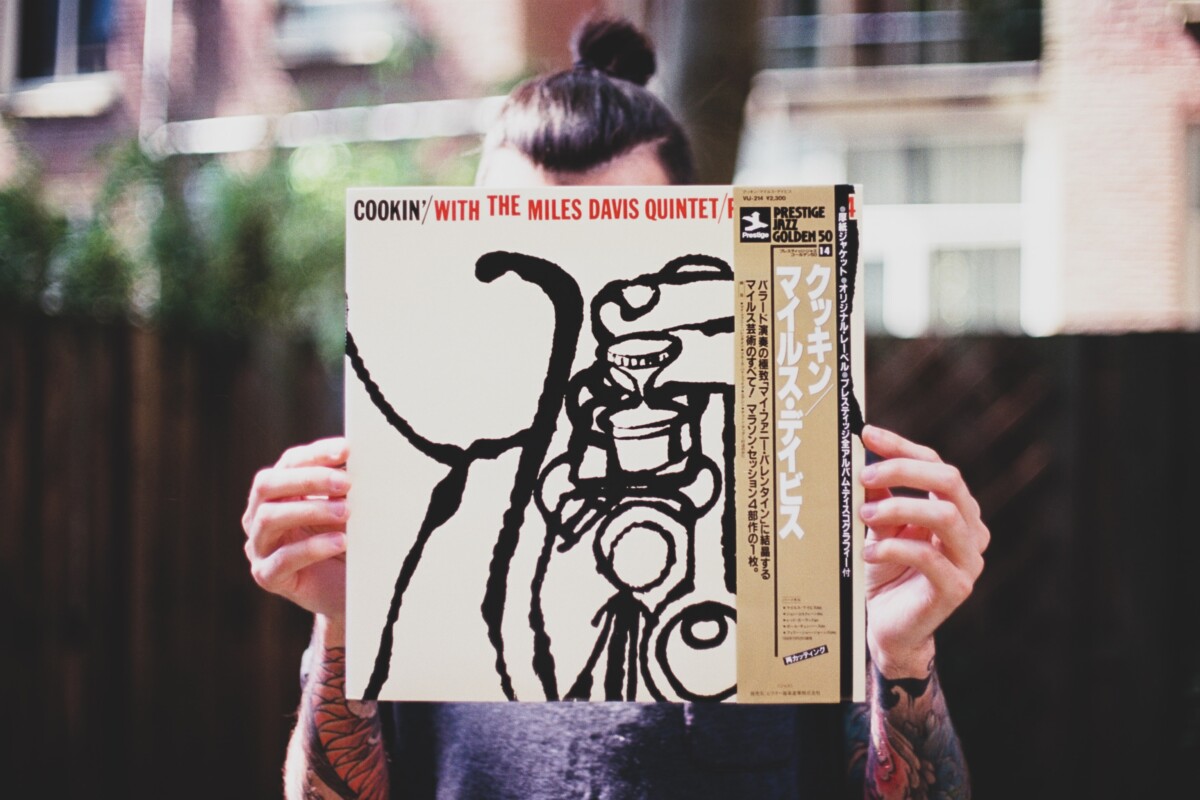Putting the final touches on your album can be a daunting process – especially if one of those final decisions is your album title. How do you capture the overall theme of your album with just one word or phrase?
If you’re struggling to name your album, there are a few ideas that might jump-start your inspiration. Some things you may want to consider are the main theme, the inspiration for the album, and a lyric of one of the songs.
So, if you’re at a loss on what to name your album, we have 10 tips to help spark your creativity.
1. Use A Song Name From The Album
The most common way to name an album is to name it after one of the songs on the album. This is called a “Title Track”. Pick a song on the album that seems to represent the entire theme the best, or just use the first or last track.
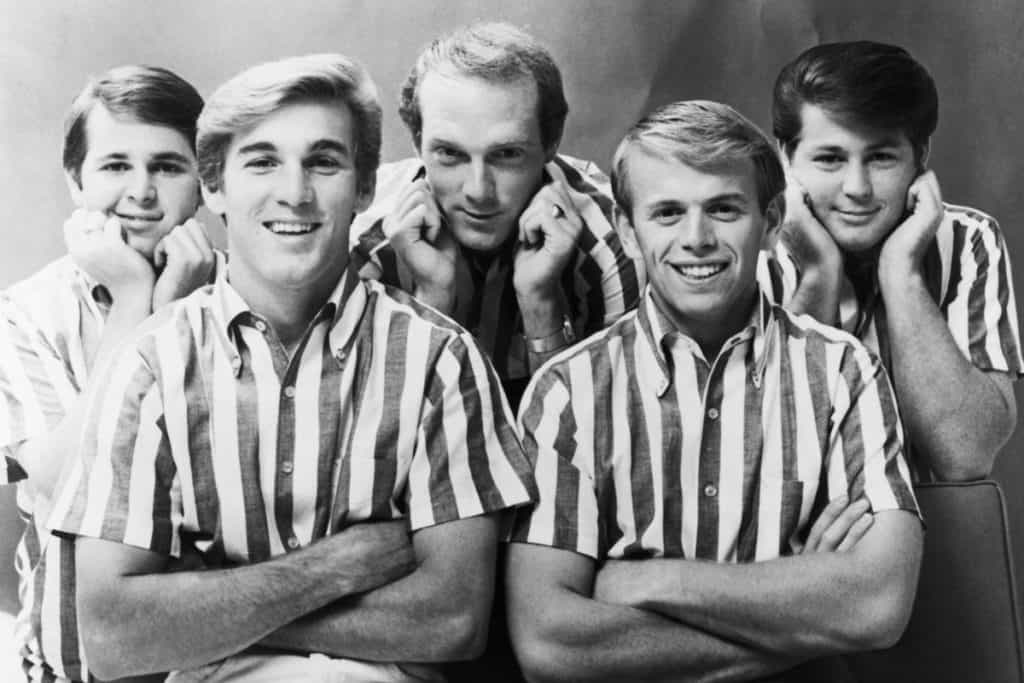
The Beach Boys – Pet Sounds
One example of this is The Beach Boys – Pet Sounds. This title track was originally written as the theme song for a Bond movie, but it didn’t end up being used.
Instead, the song was placed on the album as an instrumental interlude called “Pet Sounds,” which Brian Wilson eventually decided to name the entire album.
Band member Carl Wilson has said, “The idea he [Brian] had was that everybody has these sounds that they love, and this was a collection of his ‘pet sounds.’ … It was just so much more than a record; it had such a spiritual quality. It wasn’t going in and doing another top ten. It had so much more meaning than that.”

Bob Dylan – Highway 61 Revisited
Highway 61 Revisited is the sixth studio album by Bob Dylan, released in 1965 by Columbia Records. The title track is the seventh song on the album and features biblical lyrics and celebrates the history of the blues.
In his memoir Chronicles: Volume One, Dylan described the love he felt with the Highway 61 route: “Highway 61, the main thoroughfare of the country blues, begins about where I began. I always felt like I’d started on it, always had been on it, and could go anywhere, even down into the deep Delta country. It was the same road, full of the same contradictions, the same one-horse towns, the same spiritual ancestors … It was my place in the universe, always felt like it was in my blood.”
So, if you’re stumped with what to name your album, this route may be the easiest to take. Well, maybe the second easiest compared to our next suggestion.
2. Self-Title The Album With Your Artist Name
Bands decide to self-title an album because they think it represents the band and their music. By self-titling an album the band is saying, “This is who we are.”
Many bands have at least one self-titled album, and commonly it is their very first album. However, some bands have waited to self-title until their third or fourth album. Some bands even have multiple self-titled albums.
Have you ever wondered Why Are Albums Self-Titled? It’s a valid question, and we have the answer.
One benefit to self-titling an album – especially if it’s your first – is increased name recognition. Having a self-titled album as a debut limits confusion between the album title and the artist’s name because they’re one and the same.
This kind of thinking comes from the old days when music lovers dug through stacks of records by bands no one even knew existed. But the idea still applies, even in our digital music world.
If you’re scrolling through Spotify and you find an album you’ve never heard of before called, “Queens of the Stone Age – Queens of the Stone Age,” it’s easy to understand, “Oh, this band is probably called Queens of the Stone Age.”
The self-titled album makes an effort to quickly explain, “This is our band name. This is who we are,” since it’s easier to just have one name on the album cover, instead of two.
Another reason a band may choose to self-title is to announce a change in sound. Many bands choose to make self-titled albums so they can do something different, without confusing their fans.
When an artist makes their third, fourth, or fifth album self-titled, they’re saying, “We’re back. We’re different. These songs represent who we are now.”
The downside is those self-titled albums can be seen as a cop-out – like a band couldn’t come up with anything good so they just settled with recycling the band name as an album title. But, what happens if you have multiple albums that you want to self-title? Don’t worry, that’s been done too and we have a couple of ideas to help distinguish between your consecutive self-titled albums.
3. Use Consecutive Album Names
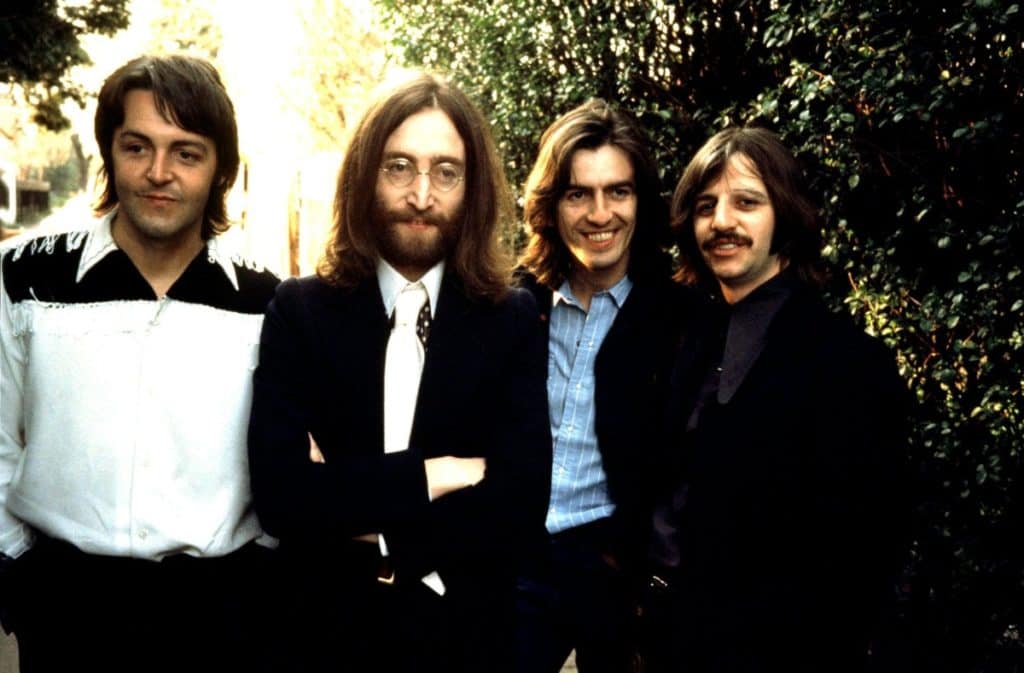
The Beatles – The White Album
For many artists, “Because The Beatles did it” is the best reason to do anything.
Their self-titled album, The Beatles, also known as The White Album, set a standard for self-titled albums that many bands have tried to imitate.
The Beatles is a 30-track double album of raw, genre-sprawling material intended to contrast their previous LP (Sgt. Pepper’s Lonely Hearts Club Band) both sonically and visually. The album is enclosed in pure white sleeves, displaying nothing but the band’s name embossed on the cover.
Even though The Beatles weren’t the first band to self-title an album, The Beatles (The White Album) continues to inspire musicians to imitate its success.
The Beatles also released a Blue Album and a Red Album during their outstanding career. Both of these albums were self-titled and distinguished by their album color.

Weezer – Blue
Weezer is also a unique example of self-titling and using color to differentiate their albums.
Of their 13-album discography, six are self-titled (distinguished largely by the color of the cover), clearly marking when the band is making a deliberate choice not to name their albums.
Their debut self-titled album (Blue) started the trend almost accidentally.
After a commercially disappointing sophomore album, their second self-titled album (Green) was a glorious return to form.
Their third self-titled album (Red) is widely believed to be because the band members couldn’t select an album name (Rivers Cuomo, the band’s frontman confirmed that they wanted to name it “The Pure Sounds of Weezer” but not everyone agreed, so they just went with “Weezer” again).
11 years and three additional self-titled albums later (White, Teal, and Black), Weezer has repeatedly added themselves to the list of bands who occasionally choose not to label their music with a distracting title.
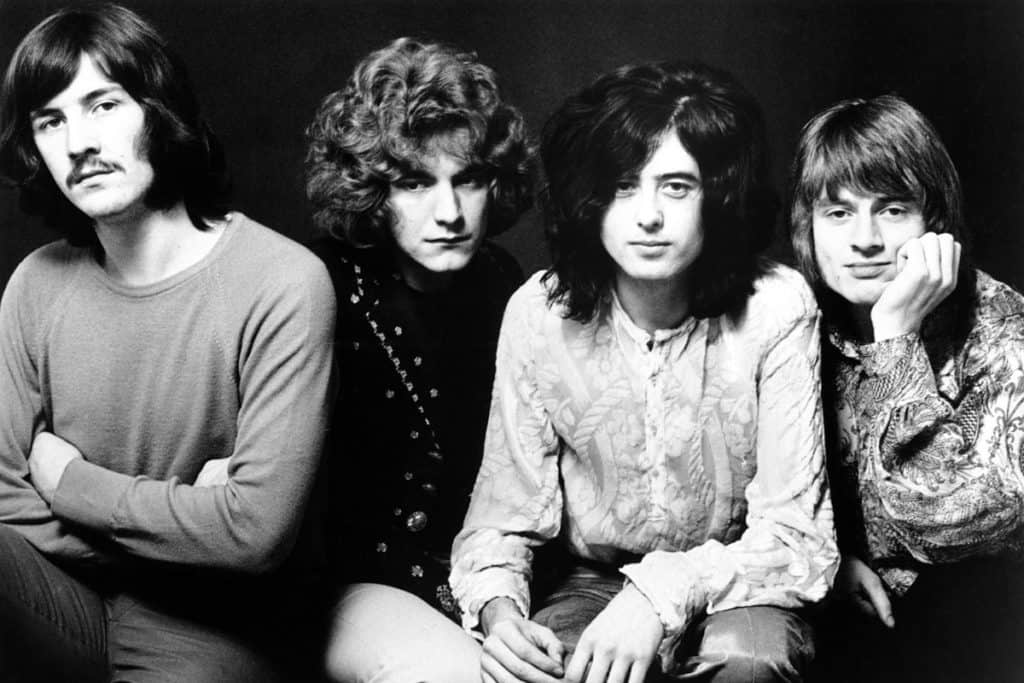
Led Zeppelin – Led Zeppelin II
Led Zeppelin’s first four albums are untitled and identified by number.
The first, Led Zeppelin, was released on January 12, 1969. This was followed by Led Zeppelin II and Led Zeppelin III. Finally, the untitled fourth studio album by Led Zeppelin, commonly known as Led Zeppelin IV, was released on 8 November 1971.
4. Identify The Inspiration Behind The Album
For some musicians a single event, person, or place can inspire an entire album.
You can find your album name by drawing on the same inspiration that you had while creating it. This is a great way to name the album while also paying tribute to its inspiration.
It can also create an artistic and somewhat cryptic feel to the album. Unless you’ve specifically used any lyrics, only those close to you will understand the true meaning behind the name.

Frank Ocean – Channel ORANGE
Channel ORANGE is Frank Ocean’s debut studio album, released in 2012 by Def Jam Recordings.
Frank Ocean is unique for many reasons; one being that he experiences the phenomena of synesthesia, which means the ability to see colors that relate to emotions.
The discography of Channel ORANGE embodies the summer when Frank Ocean fell in love.
The orange, which can be seen on the album art, is the same orange he saw as he experienced that love. The purpose of the album is to replicate his version of love in melodies, songs, and album art.
5. Capture The Theme Of The Album
Even if you aren’t writing a concept album, there are usually a few themes that embody the album.
Coming up with a catchy phrase that describes one or all of your album themes can give listeners a good idea of what to expect.
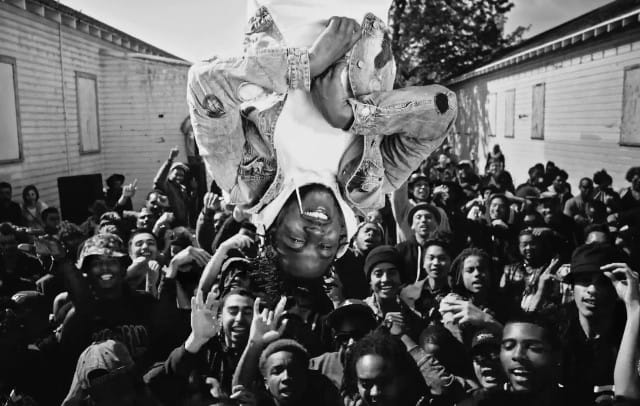
Kendrick Lamar – To Pimp A Butterfly
To Pimp A Butterfly is an incredible album title and an example of capturing the theme of an album with one phrase.
The idea of the album is that ‘butterflies’ in the ghetto are being deliberately stopped from reaching their potential. Instead, these men, women, and children are being ‘pimped’ and used by the cruelty around them.
To Pimp A Butterfly perfectly expresses the album themes and, honestly, is just such a clever album title.
6. Use A Specific Lyric Or Phrase From The Album
Cutting songs or lyrics happen all the time when releasing a record. If there is one song or one lyric that you love, but it just didn’t quite make the cut, now would be a great time to use it – by making it your album name.
Some bands even use the names of cut songs as an album title and then have gone on to use the song in later albums.
The process of naming an album is a lot like naming the songs themselves. Check out How To Name Your Song: 10 Tips For Creating A Memorable Title (With Examples).
Led Zeppelin released an album called Houses of the Holy after a cut song, but then turned around and actually used that song on their Physical Graffiti album.
Or, rather than directly using one of your song names, you could opt to grab a hook from one of the songs instead. Even if it’s not the most popular song, it may still capture the essence of the album. One example of this is Selling England by the Pound by Genesis.
The hook can be seen here:
“Paper late!” cried a voice in the crowd
— Genesis
“Old man dies!” The note he left was signed ‘Old Father Thames’
It seems he’s drowned
Selling England by the Pound
Genesis created some clever wordplay as well as a strong statement.
It is common for certain items to be “sold by the pound,” which means the price is dependent on the weight of the item.
The concept of “Selling England by the Pound” is a strange concept, as you’d normally use this to depict the selling of more ordinary items, like food in a grocery store.
7. Name The Album After Another Artist’s Song
There is a Wikipedia page full of examples of bands named after other performer’s songs – if they can name their band after another song, why couldn’t you do the same thing with an album?
Some of those examples include:
- Flume, after Bon Iver’s “Flume”
- Hello Goodbye, after The Beatles’ “Hello, Goodbye”
- Poison, after Kix’s “Poison”
- Pierce the Veil, after Before Today’s “Pierce the Veil”
- Radiohead, after Talking Heads’ “Radio Head”
Hey, steal like an artist, you know?
8. Use An Album Name Generator
Okay, I know this isn’t the most creative option, but sometimes it helps spark a thought that leads to something original.
I would for sure recommend any of the tips above before going with a name generator, but it might give you a word or phrase that may inspire the real album name. Probably a last resort, but you never know.
I tired one recently for fun and here’s what it gave me:
- Bent out of shape
- Fluke
- Rain Check
- Class Act
- Crowd Control
So, you know, not awesome but it could spark some creativity on your part. It may surprise you. If you want to try it out for fun. Here are a few sites that I found:
Another random place you could try to find inspiration is Wikipedia. Go to Wikipedia and hit “random article” on the left side menu and an article will pop up. The name of that article could be the name of your band.
Using this method gave me:
- The One
- Mirage
- Viduša
- The Final Girl(s)
- The Only Way
- Hollywood or Bust
- War Paint
And then a bunch of random people’s names, which I just skipped over because how random would that be? Anyway, like I said, very random but could potentially be helpful.
9. Name The Album After The Artwork
If you or your band puts a lot of emphasis on the album visuals, like the album art or the groups’ aesthetic, you can generally come up with a phrase that embodies who your band is at the time of the album’s release.
For example, if a specific photograph or painting inspired the record, and you want to use that as the artwork for the album, it only makes sense to name it after the artwork.
10. Name The Album After Where It Was Recorded

While most independent artists find themselves recording in their bedrooms or in a friend’s basement, sometimes artists get the rare opportunity to record somewhere amazing. Your band can take a trip to a cabin in the woods or stay at a relative’s spare home by the ocean.
Wherever you record, the atmosphere can be enough to inspire even more music, and even the name of the album.
The Beatles obviously did this with Abbey Road, but another example is the band From Indian Lakes.
Although the band’s discography doesn’t reflect a place, the band name itself does.
While recording the band’s first demos and singles at a friend’s studio in Indian Lakes, California, the band’s originator, Joey Vannucchi decided to call the band From Indian Lakes.
Both clever and catchy, so location can always be a great inspiration for album names.
A Few Other Things To Consider:
Capitalization
Whether you want every word to be capitalized or lowercase or a mix of the two, deciding how to portray the songs can be an important aesthetic for your brand.
For example, Copeland used Title Capitalization for their 2019 album, Blushing. You can see the tracklisting below:
A great example of lowercase stylization is joan, who continues to lowercase their band name and individual songs. With songs like, “i loved you first,” and “ease your mind,” they’ve made the relaxed lowercase vibe their aesthetic.
Noah Gunderson switched up his capitalization between albums. In his 2019 album WHITE NOISE B-SIDES he capitalized his album title and his songs, which appeared like this:
He then switched to Title Capitalization for his most recent album, Lover.
Whatever you decide will be a great aesthetic for you, just make it a point to choose a stylization and not just default to what you feel is normal.
Title Length
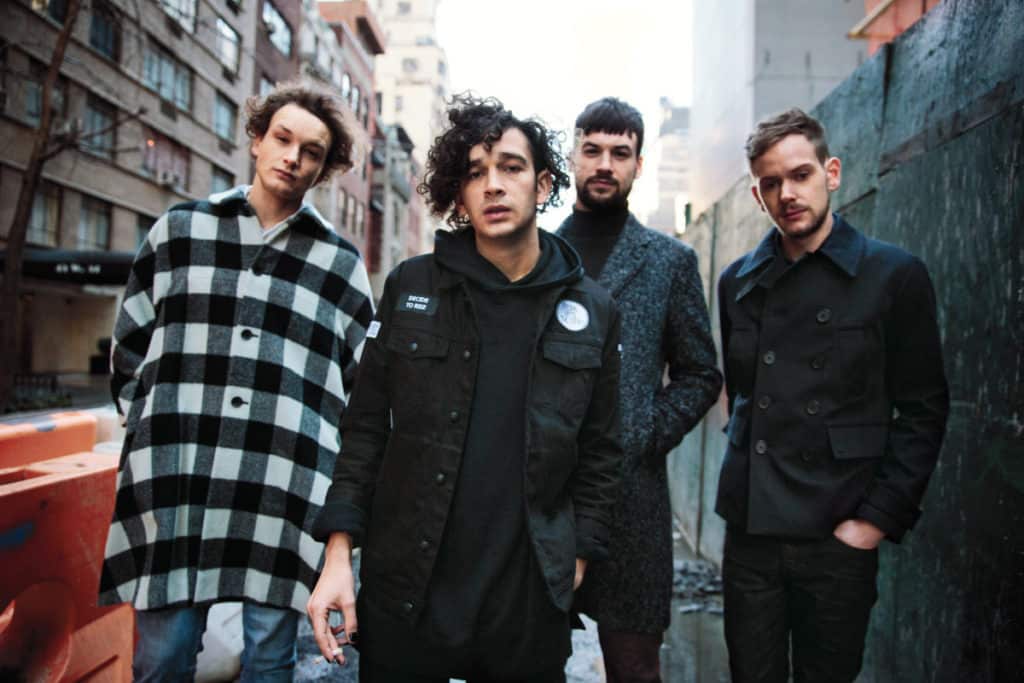
Oh, The 1975! Who would have ever thought that anyone could successfully name an album, I like it when you sleep, for you are so beautiful yet so unaware of it. But they did it and it’s awesome. It’s so long and out of the ordinary that fans just abbreviate it to iliwys.
Other albums use one word or even just a number. Kanye West even made up his own word, Yeezus, which tells us Kanye has embraced his giant ego completely.
Taylor Swift released an album that was just titled with a year: 1989. Naming her album after her birthdate signifies that she wants the world how much she has grown as an artist over the years. She’s saying, “This is Taylor Swift.”
So, after you have your perfect title picked out take some time to think about its stylization because it’s just as important to your band’s image.
Related Questions:
Why Are Singers’ Albums Generally Released Every 2 Years?
The making of an album usually requires: writing the music, recording, production, mixing, and mastering.
This progression can take anywhere from a few weeks to several months, with some projects taking a year or more.
And then, the marketing, distribution, artwork, copyright, and licensing all need to take place. Depending on the size of your team and operation, this can take anywhere from a month to six months.
After both of these cycles are completed, the artist then promotes that record through interviewing and touring the country.
Before COVID-19, touring was historically where artists made most of their money, so many artists would tour for a year or more promoting the same album.
This entire process – the album cycle – generally takes two years and is followed religiously by most “major label” musicians.
How Do Singers Come Up With Their Stage Names?
There are many different avenues that you could take to find your stage name. A stage name is often based on a name you were called with as a child, a nickname or something based on your personality.
Some common ways to help you come up with your stage name:
- An altered version of your real name. Example: Drake’s given name is Aubrey Drake Graham
- Omitting the middle name. Example: Taylor Alison Swift is Taylor Swift
- A person, place or thing: Example: Passenger, The Weeknd
- 2 Common nouns put together: Example: Guns N’ Roses, Flying Lotus
- 1 Unique word. Example: Avicii, Skrillex, Stromae
- 1 word + Number/Sp Character: For example: 50 Cent, 2 Pac, 2 Chainz, Ke$ha
Written by Madison Weaver.
For more industry tips and music marketing hacks, check out Ennui Magazine. You can also follow us on Facebook, Twitter, Instagram, Pinterest, and YouTube.
